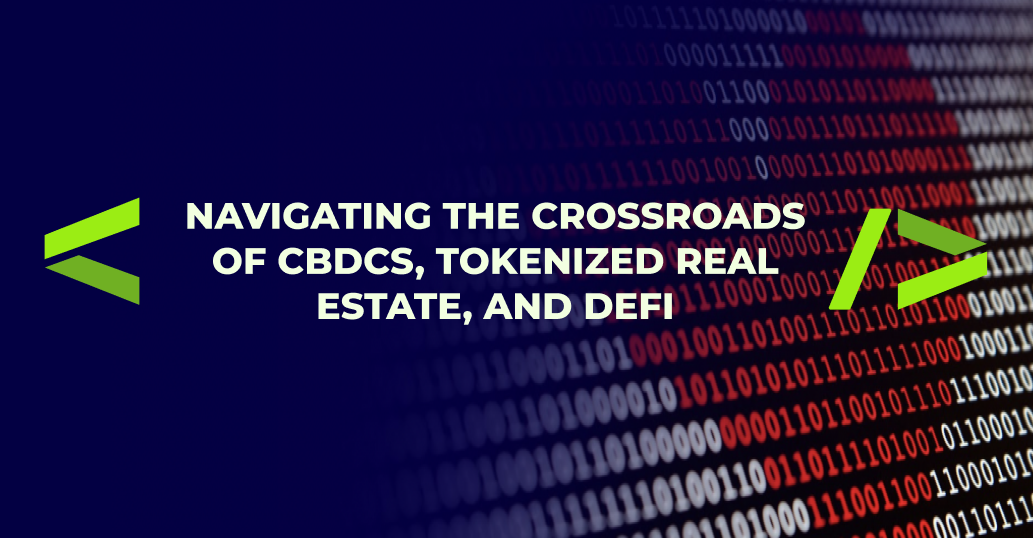
As we stride further into the digitized economy, a new financial landscape is taking shape, one where blockchain technology and digitized assets are leading the way. In the midst of this transformation, Ripple aims to harness the power of Central Bank Digital Currencies (CBDCs) and tokenized real estate to catalyze decentralized finance (DeFi) lending protocols.
The Advent of Tokenized Real Estate in the Web3 Landscape
James Wallis, Ripple’s VP of central bank engagements and CBDCs, disclosed that Ripple is exploring an initiative backed by the Hong Kong Monetary Authority. This initiative revolves around a CBDC-powered lending protocol that uses tokenized real estate as collateral.
Wallis shared, “You see these different elements of web3 coming together… You’ve got the ability to tokenize your property, and then to actually take out loans against that using a DeFi lending protocol.”
Ripple’s CBDC Platform: Bridging DeFi and Traditional Finance
Alongside this, Ripple launched its full-stack CBDC Platform. This platform aids central banks, governments, and financial institutions in launching digital currencies, offering a tech infrastructure grounded in the same blockchain technology underpinning the XRP Ledger. The platform seeks to enable key CBDC use cases, such as settling cross-border transactions, facilitating domestic payments, and inter-bank settlement.
Ripple’s CBDC Platform already has governments in its fold. The Republic of Palau, a Micronesian archipelago, and Montenegro, currently applying for EU status, are among the early adopters.

Tokenized Real Estate – The New Frontier in CBDCs and DeFi
The exploration of tokenized real estate in the context of CBDCs and DeFi is intriguing, as it combines the security of real-world assets with the flexibility and inclusivity of digital finance. For Wallis, the future of CBDCs lies in becoming integral to DeFi and Web3 use cases.
He elaborated, “The internet of value is going to have central bank money as part of it, and we want to be a facilitator for that.”
Wallis sees CBDCs as more than just digital versions of traditional currencies. He views them as platforms for innovation, capable of transforming financial systems and facilitating seamless transactions across borders. With over 90% of countries researching or developing CBDCs, they appear set to play a pivotal role in the future of money.
The project in Hong Kong, centered on tokenized real estate, is a prime example of this vision. Wallis said, “All the different elements of Web3 are coming together, you have digital currency with the CBDC and you have the ability to tokenize property and take out loans against that through a DeFi protocol.”
Navigating the Crossroads of CBDCs, Tokenized Real Estate, and DeFi
The integration of CBDCs, tokenized real estate, and DeFi has the potential to radically transform the financial industry. It presents a fascinating crossroads where traditional banking systems, the digital world of blockchain technology, and real-world assets intersect. By combining these elements, new innovative solutions are created to tackle longstanding issues in the financial sector.
When asked about the potential benefits of CBDCs and tokenized real estate in DeFi lending protocols, Wallis noted, “Without exception, every project that we’re involved in has cross-border payments as one of the top topics that they want to improve.” With the infusion of CBDCs, real-world assets such as tokenized real estate become even more accessible and versatile, redefining the financial landscape and potentially eliminating geographical boundaries in the lending market.
The Role of CBDCs in Overhauling Legacy Systems
In the current financial infrastructure, old-school systems designed decades ago are straining under the demands of a rapidly digitizing economy. The transformation to a digital economy necessitates a revamp of these legacy systems to meet new expectations around instant clearing and settlement, security, and ease of use.
Wallis believes CBDCs could be instrumental in ushering in this new era of digital finance. He emphasized the importance of usability, stating, “These applications have to be of use. They have to provide value to people or companies, and usability is a key theme.” A seamless user experience, paired with the practical utility of CBDCs in everyday transactions, could be the catalyst that drives their adoption.
Interoperability: A Key Consideration in the Digital Finance Ecosystem
Along with the advent of tokenized real estate and CBDCs in the DeFi realm, the concept of technical interoperability is being scrutinized by countries worldwide. The ability to move assets between different blockchain platforms seamlessly is crucial for the widespread adoption and usability of digital currencies and assets.
Wallis acknowledges the importance of interoperability, highlighting it as a key area of investigation for Ripple, “When you think about the emerging world of DeFi and the innovation that’s going on around digital payments of all different sorts, the technology has to work. Users need to be able to take an asset from one chain to another.”
Ripple’s CBDC platform is designed with this interoperability in mind, establishing a framework that enables the coexistence of CBDCs with other forms of digital payments, including stablecoins, crypto, and DeFi lending protocols.
Innovation and the Future of Tokenized Real Estate
Wallis underscores the role of innovation in driving the adoption of CBDCs. By treating CBDCs as a platform for innovation, he believes the technology can unlock new possibilities, “We’re looking to encourage developers to create applications that could be turned into commercial applications for central banks and commercial banks to enable business efficiencies.”
Such innovations, combined with the integration of tokenized real estate into DeFi lending protocols, could redefine the landscape of digital finance. Ripple’s project in Hong Kong is an exciting illustration of this vision, combining the security of CBDCs, the real-world value of tokenized real estate, and the versatility of DeFi lending protocols.
As the worlds of traditional finance, blockchain technology, and real estate converge, new avenues of financial innovation and inclusion are being paved. Ripple’s innovative efforts mark a promising step in this direction, shedding light on how the integration of CBDCs and tokenized real estate can revolutionize the world of DeFi lending. As such, the advent of tokenized real estate in the realm of DeFi signals the dawn of a new era in digital finance, one where blockchain technology and real-world assets harmoniously coexist.
Source: thedefiant.io
